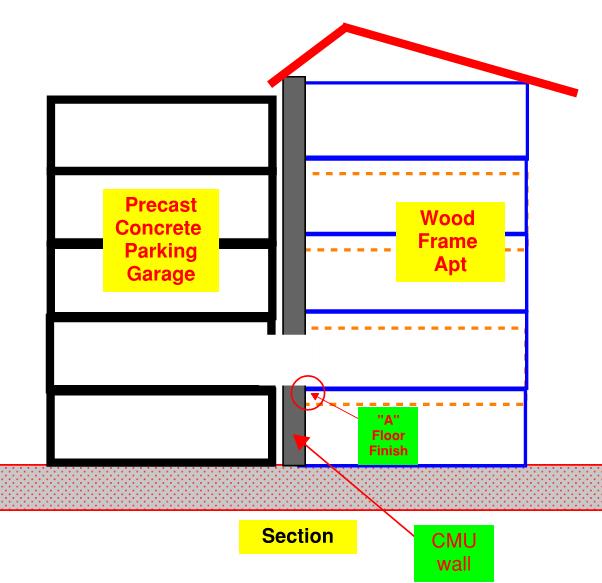JohnRwals
Structural
- Jul 8, 2020
- 151
Hi!
I have seen wood frame Apt building wrapping precast concrete parking structure.
Five story huge CMU walls are laid out as an exterior walls close to the parking structure.
I am curious how axial shortening of wood frame (dotted lines) can impact exterior CMU walls.
Is sliding joint connection used between wood frame and CMU walls?
As interior wood frame settles down, how can finish levels around doors be adjusted like in detail "A"?
JRW

I have seen wood frame Apt building wrapping precast concrete parking structure.
Five story huge CMU walls are laid out as an exterior walls close to the parking structure.
I am curious how axial shortening of wood frame (dotted lines) can impact exterior CMU walls.
Is sliding joint connection used between wood frame and CMU walls?
As interior wood frame settles down, how can finish levels around doors be adjusted like in detail "A"?
JRW

